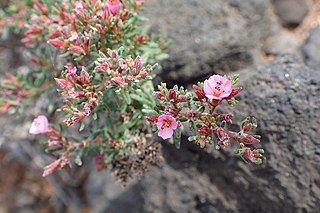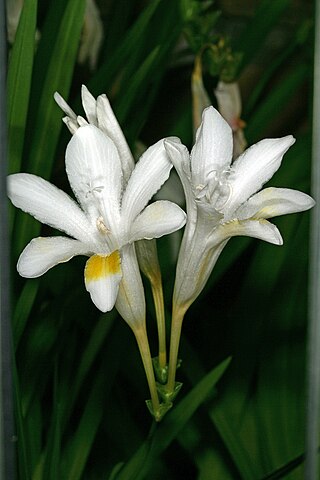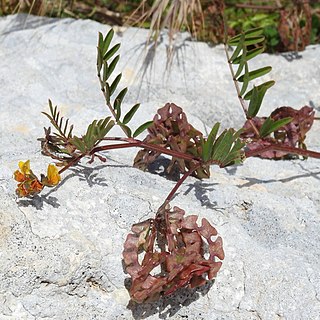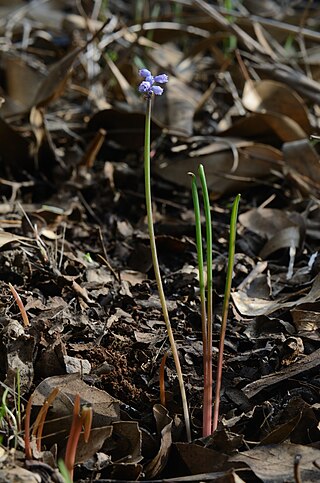
Herniaria is a genus of flowering plants in the family Caryophyllaceae known generally as ruptureworts. They are native to Eurasia and Africa but several species have been widely introduced to other continents. These are flat, mat-forming annual herbs. The genus gets its scientific and common names from the once-held belief that species could be used as an herbal remedy for hernias.

Festuca cinerea, the blue fescue, is a species of perennial grass in the family Poaceae. They have a self-supporting growth form and simple, broad leaves. Individuals can grow to 29 cm tall.

Frankenia pulverulenta, the European seaheath, is a species of annual herb in the family Frankeniaceae. They have a self-supporting growth form and simple, broad leaves. Individuals can grow to 5 cm tall.

Freesia leichtlinii is a species of herb in the family Iridaceae.

Fumaria densiflora is a species of annual herb in the family Papaveraceae. They have a self-supporting growth form and simple, broad leaves. Individuals can grow to 46 cm tall.

Fumaria flabellata is a species of plants in the family Papaveraceae.

Fumaria vaillantii, or earthsmoke, is a species of perennial herb in the family Papaveraceae. They have a self-supporting growth form and simple, broad leaves. Individuals can grow to 28 cm.

Hippocrepis multisiliquosa is a species of annual herb in the family Fabaceae. They have a self-supporting growth form and compound, broad leaves. Individuals can grow to 24 cm tall.

Hypecoum imberbe, the sicklefruit hypecoum, is a species of annual herb in the family Papaveraceae. Flowers are visited by Lycaena phlaeas.

Hypecoum procumbens, the sickle-fruited hypecoum, is a species of annual herb in the family Papaveraceae. They have a self-supporting growth form and simple leaves. Individuals can grow to 40 cm tall.
Hypericum australe is a species of plant in the family Hypericaceae. Individuals can grow to 24 cm tall.
Micromeria microphylla is a species of plants in the family Lamiaceae.

Misopates calycinum is a species of annual herb in the family Plantaginaceae. They have simple leaves.

Muscari parviflorum is a species of plants in the family Asparagaceae.

Vulpia fasciculata, the dune fescue, is a species of annual herb in the family Poaceae. They have a self-supporting growth form and simple, broad leaves. Individuals can grow to 0.24 m.

Parietaria lusitanica is a species of plant in the family Urticaceae.

Scorzonera laciniata, also known as cutleaf vipergrass, is a species of herb in the family Asteraceae.

Tamarix africana, the African tamarisk, is a species of tree in the family Tamaricaceae. They have a self-supporting growth form and simple leaves. Individuals can grow to 6.3 m.

Trifolium lappaceum, the burdock clover, is a species of annual herb in the family Fabaceae. They have a self-supporting growth form and compound, broad leaves.

Trifolium suffocatum, the suffocated clover, is a species of annual herb in the family Fabaceae. They have a self-supporting growth form and compound, broad leaves. Individuals can grow to 4.2 cm.


















